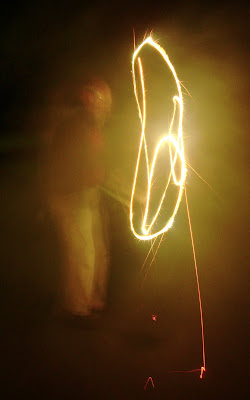This corner of the blogosphere has been quiet over the past week, as I've been living off the grid and far outside the reach of the internet. Here's the little corner of Honduras in which, for the fourth summer, I was participating in a water and construction project.

That tropical sun can burn scorchingly bright. Local flowers ignite their own fiery replies. This is no country for pastel hues and delicate habits: flowers here demand attention and, when they are as colorful and frothy as the blossoms of this acacia tree, they get it.

Some familiar plants are in their element in this tropic land: canna lilies,

bougainvillea, known locally as Napoleón,

and even a deep purple dahlia bud.

This year, I asked for the names of unfamiliar flowers. Some, like this vibrant mountain vine, are considered too unremarkable for comment. ("We call that 'mountain vine.'" Thanks.) Others are known by their all-too-graphic similarities with parts of human anatomy. (One answer that I received embarrassed me right out of further questioning for an entire day.)

You can't translate our post-war suburban notion of garden into this rural landscape. The front yards are packed dirt, swept clean. No mowed lawns or clipped foundation plantings here. Nevertheless, some folks have incorporated plants into their homes, like this bed of canna lilies, the pots of verbena, and the green fringe twining along the roof line.

Meantime, subsistence farming. like these rows of beans among the mango trees and banana plants, goes on all around.

Stewardship of the landscape is a part of daily life, even if it is not immediately apparent to those of us whose gardening standards are framed, consciously or unconsciously, by photographs in glossy magazines and visits to arboretums. So I was delighted to have my horticultural preconceptions challenged by the sight of this cooperative nursery, filled with tidy rows of acacia, pine, papaya, and coaba tree seedlings, at the farm of a local elder. These little plants were on their way to reforestation and residential landscaping projects. Guess that bright light helped me to see things differently!




 Oh yes, and how many more iris borers had I found when I threw in the trowel six hours later? Exactly zero.
Oh yes, and how many more iris borers had I found when I threw in the trowel six hours later? Exactly zero.






























